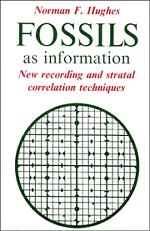Book contents
- Frontmatter
- Contents
- Preface
- Part A Problem of effectiveness
- Part B Proposed solution
- Part C Applications for information-handling
- 9 Earth and biologic evolution
- 10 Proposed new Period Classification of fossils of past organisms
- 11 Paleoenvironment investigation
- 12 General stratigraphic procedures
- 13 Limitations of the use of zones
- 14 Event-Correlation
- Part D Further considerations
- Appendices 1 and 2: Worked examples of GOR and PTR forms
- Glossary
- References
- Index
13 - Limitations of the use of zones
Published online by Cambridge University Press: 02 February 2010
- Frontmatter
- Contents
- Preface
- Part A Problem of effectiveness
- Part B Proposed solution
- Part C Applications for information-handling
- 9 Earth and biologic evolution
- 10 Proposed new Period Classification of fossils of past organisms
- 11 Paleoenvironment investigation
- 12 General stratigraphic procedures
- 13 Limitations of the use of zones
- 14 Event-Correlation
- Part D Further considerations
- Appendices 1 and 2: Worked examples of GOR and PTR forms
- Glossary
- References
- Index
Summary
Ephemeral nature of zones. Most stratigraphic works produce a new or reorganised zonal scheme as a mark of progress or even as a goal achieved. What does not seem to be recognised is that a zonal scheme only enshrines the author's knowledge up to the time of publication, and thereafter represents a wasting asset; with increasing other knowledge in and around the zones and without any coherent system for their emendation, all kinds of zonal schemes steadily pass out of date. Re-publication of zonal schemes without updating and re-statement of all relevant knowledge, achieves nothing beyond the repetition.
Biozones. All zones based on records of characters changing through successions are essentially similar in nature, but biozones have been the most studied and more varieties of them have been recognised. The biozones that are most precise in theory are the phylozones (= lineage zones = consecutive-range-zones), in which the beginning zonal boundary point depends only on one definition of distinction from one species to the next in a presumed lineage. This distinction can clearly be stated with accuracy but, as discussed earlier (Section 6.2), a precise distinction depends on the two species concerned having accurately delineated variations as opposed to ‘cluster’ definitions. Additionally it is seldom appreciated that when fully described the point of change has to be between parent and progeny, and consequently represents a very small step in a lineage of descent.
Second best are concurrent-range-zones (= overlap zones) in which the zonal boundary point depends on the detail of the separate definitions of two unrelated species.
- Type
- Chapter
- Information
- Fossils as InformationNew Recording and Stratal Correlation Techniques, pp. 86 - 89Publisher: Cambridge University PressPrint publication year: 1989



